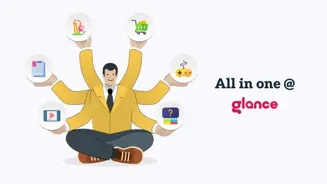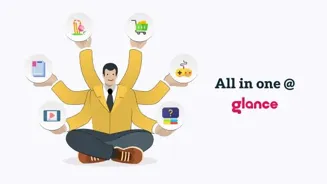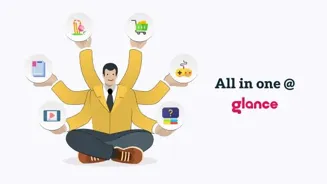Unraveling Workplace Communication Woes in Indian Offices: Solutions Await! Dive into strategies for smoother interactions and a harmonious work environment
Mumbai: In the bustling landscape of Indian offices,
where chai breaks are sacred and deadlines loom large, one persistent challenge often rears its head: communication barriers.
These invisible hurdles can trip up progress, breed misunderstandings, and leave even the most seasoned professionals feeling like they're lost in translation. But fear not, fellow workplace warriors!
This article dives deep into the common communication hiccups plaguing Indian offices and, more importantly, provides nine practical solutions to smoothen those communication lines and foster a more harmonious work environment.
Whether you're a CEO or a fresher, these insights are bound to help you navigate the complex world of workplace interactions with finesse. Communication is key, as they say, and unlocking its potential can unlock the potential of your entire organization.
So, grab your masala chai, settle in, and let's decode the secrets to effective workplace communication, Indian style!
One of the most common culprits is the diverse linguistic landscape of India.
With so many languages spoken across the country, misunderstandings can arise simply due to differing interpretations of words or phrases. For example, a simple phrase like "doing the needful" can have varied meanings depending on regional context.
Accent variations, too, can contribute to communication breakdowns, especially during phone calls or video conferences. Moreover, cultural nuances play a significant role. Direct communication styles, common in some cultures, might be perceived as rude or aggressive in others.
Similarly, reluctance to openly challenge senior colleagues, deeply ingrained in many Indian organizations, can stifle feedback and hinder collaborative learning. Understanding these cultural differences is the first step towards building a more inclusive and understanding workplace.
Consider implementing language training programs, promoting cross-cultural awareness initiatives, and encouraging open dialogue to address these challenges head-on.
Remember, communication is a two-way street, and empathy is a crucial ingredient for ensuring messages are received and understood as intended.
Hierarchy, deeply embedded in the Indian work culture, often acts as a barrier to open communication.
Junior employees may hesitate to share their ideas or concerns with senior management, fearing repercussions or appearing disrespectful. This can lead to a top-down communication flow, where information is disseminated downwards but rarely travels upwards.
Formal communication channels, while essential, can sometimes feel impersonal and intimidating, discouraging informal interactions that foster trust and rapport.
Moreover, the "chalta hai" attitude, which often permeates certain aspects of Indian work culture, can inadvertently lead to a lack of attention to detail in communication, resulting in errors, omissions, and unmet expectations.
To overcome these challenges, organizations need to create a more inclusive and open environment where employees feel comfortable expressing their opinions, regardless of their position in the hierarchy.
Implementing anonymous feedback mechanisms, encouraging skip-level meetings, and fostering a culture of learning from mistakes can help break down these barriers and promote more effective communication.
Technology, while intended to facilitate communication, can sometimes create its own set of problems. Email overload, for instance, can lead to important messages being overlooked or ignored.
Instant messaging platforms, while convenient, can be disruptive and contribute to a sense of constant connectivity, blurring the boundaries between work and personal life.
Moreover, reliance on technology can sometimes replace face-to-face interactions, leading to a loss of nonverbal cues and a decrease in empathy. Technical glitches, poor internet connectivity, and lack of digital literacy can further exacerbate these challenges.
To address these issues, organizations need to establish clear communication protocols for different channels, promoting the use of email for formal communication and instant messaging for quick updates.
Encouraging regular face-to-face meetings, especially for important discussions, can help foster stronger relationships and improve understanding.
Providing training on effective digital communication skills and ensuring reliable technology infrastructure are also crucial for overcoming these barriers.
Ambiguity, or lack of clarity, in communication is another common pitfall in Indian workplaces.
Vague language, unclear instructions, and unstated expectations can lead to misunderstandings, errors, and wasted effort. Often, individuals assume that others understand what they mean, without explicitly articulating their thoughts or providing sufficient context.
This can be particularly problematic in cross-functional teams, where team members may come from different backgrounds and have different levels of knowledge.
Additionally, fear of appearing incompetent or asking "stupid" questions can prevent individuals from seeking clarification, exacerbating the problem. To combat ambiguity, organizations should emphasize the importance of clear and concise communication.
Encouraging active listening, asking clarifying questions, and providing detailed instructions can help ensure that everyone is on the same page. Using visual aids, such as flowcharts and diagrams, can also help to simplify complex information and improve understanding.
Remember, clear communication is not just about speaking or writing clearly; it's also about actively listening and soliciting feedback.
In addition to the above, internal politics and rivalries can also create significant communication barriers.
When employees are more focused on protecting their turf or advancing their own agendas, communication can become guarded, manipulative, and even deceptive. Information may be withheld, distorted, or used as a weapon to undermine rivals.
This can create a toxic work environment where trust is eroded and collaboration is impossible. Furthermore, gossip and rumors can spread like wildfire, fueling misunderstandings and creating unnecessary drama.
To mitigate the effects of internal politics, organizations need to foster a culture of transparency, trust, and ethical behavior.
Implementing clear conflict resolution mechanisms, promoting teamwork and collaboration, and rewarding ethical conduct can help create a more positive and productive work environment. Leaders should also model transparent communication and actively discourage gossip and rumor-mongering.
Finally, lack of feedback and recognition can also contribute to communication problems. When employees don't receive regular feedback on their performance, they may feel undervalued, demotivated, and unsure of what is expected of them.
Similarly, when good work goes unrecognized, it can lead to resentment and a decline in morale. Without regular feedback, it becomes difficult for employees to identify areas for improvement and to understand how their work contributes to the overall goals of the organization.
This can create a disconnect between employees and management, leading to misunderstandings and a lack of engagement. To address this issue, organizations should implement regular performance reviews, provide ongoing feedback, and recognize and reward good work.
Creating a culture of appreciation and acknowledging employees' contributions can significantly improve communication and boost morale.
Let's explore nine tangible solutions to tackle these communication barriers head-on:
Invest in Communication Skills Training
Conduct workshops focusing on active listening, clear articulation, and cross-cultural communication. Tailor these workshops to the specific needs of your workforce.
Promote Open-Door Policies
Encourage executives to be receptive to employee concerns and recommendations, promoting a culture of transparent dialogue and mutual respect.
Establish Clear Communication Channels
Opt for the medium that suits the message -formal announcements through email, quick updates through instant messaging, and important discussions face-to-face.
Encourage Feedback and Recognition
Regular performance reviews, informal feedback sessions, and public acknowledgment of accomplishments will boost morale and communication.
Foster a Culture of Inclusivity and Respect
Promote diversity and inclusion to help employees appreciate and value the perspectives of others.
Simplify Language and Avoid Jargon
Use clear and straightforward language in communications, while avoiding technical jargon.
Utilize Visual Aids to Enhance Clarity
Employ diagrams, infographics, and presentations to make complex ideas understandable.
Implement Conflict Resolution Mechanisms
Establish clear protocols to address conflicts constructively and prevent them from escalating into bigger problems.
Lead by Example
Executives serve as communication models by displaying empathy, actively listening, and transparently communicating decisions.
Indian companies can improve communication for harmony, productivity, and team happiness
By implementing these measures, Indian companies can conquer communication barriers, resulting in more harmony in the workplace, increased productivity, and a happy team!
AI Generated Content. Glance/InMobi shall have no liability for the content












